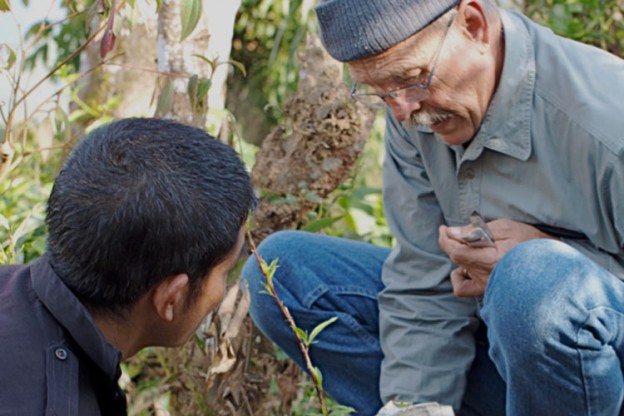Your cart is currently empty!

I’m blessed to meet lots of good human beings. Alan is one. Alan has worked in China, Thailand and Laos for 35 years. He has genuine love for the people and a vision for what could be. In his mind’s eye he sees the potential that one day the hills may be verdant with fruit trees and the people will no more be poor. Alan has keen eyes for reality, too. He has noticed that there are wild persimmon trees that can be grafted with high quality persimmons and that there is a good market for persimmon fruit in China.
In December of 2011 Alan took three CRWRC staff and one government counterpart on a study tour to Thailand to learn how to graft persimmon trees and bring back scion wood of two improved varieties to graft onto to native wild persimmon trees in the project area in Phongsli, Laos. Later he took another group of village farmers to see the same area in Thailand. Previously, these hearty wild persimmon trees were considered as weeds. They had withstood fire, drought, heavy rain, and the constant whacking of farmers. They were considered a nuisance. Their fruit was small and inedible. With Alan’s help many trees were grafted in three Akha villages in northern Laos. Only a small percentage of them were successful, due to the staff’s and farmer’s developing skill and lack of good follow-up. But, several grafts were successful.

February, 2012 brought real satisfaction to local farmers: They could see some of the grafts were growing well and there were even fruit buds forming on the more mature trees that were grafted. This was really important because those farmers from the four Akha villages had seen the tons of persimmon being harvested and sold in Thailand. They had tasted the fruit themselves and brought some back for their neighbors and family to see and taste.

Now, these four villages have established small fruit tree nurseries and that contain hundreds of seedlings growing in plastic bags, ready to be planted as soon as the rainy season starts. It will take four or five years to start harvesting the first persimmons. So they needed to see these buds! Later this year, we hope that we will see few fruits. That’s the necessary encouragement they needed to give them incentive to carry through with this long term effort.

